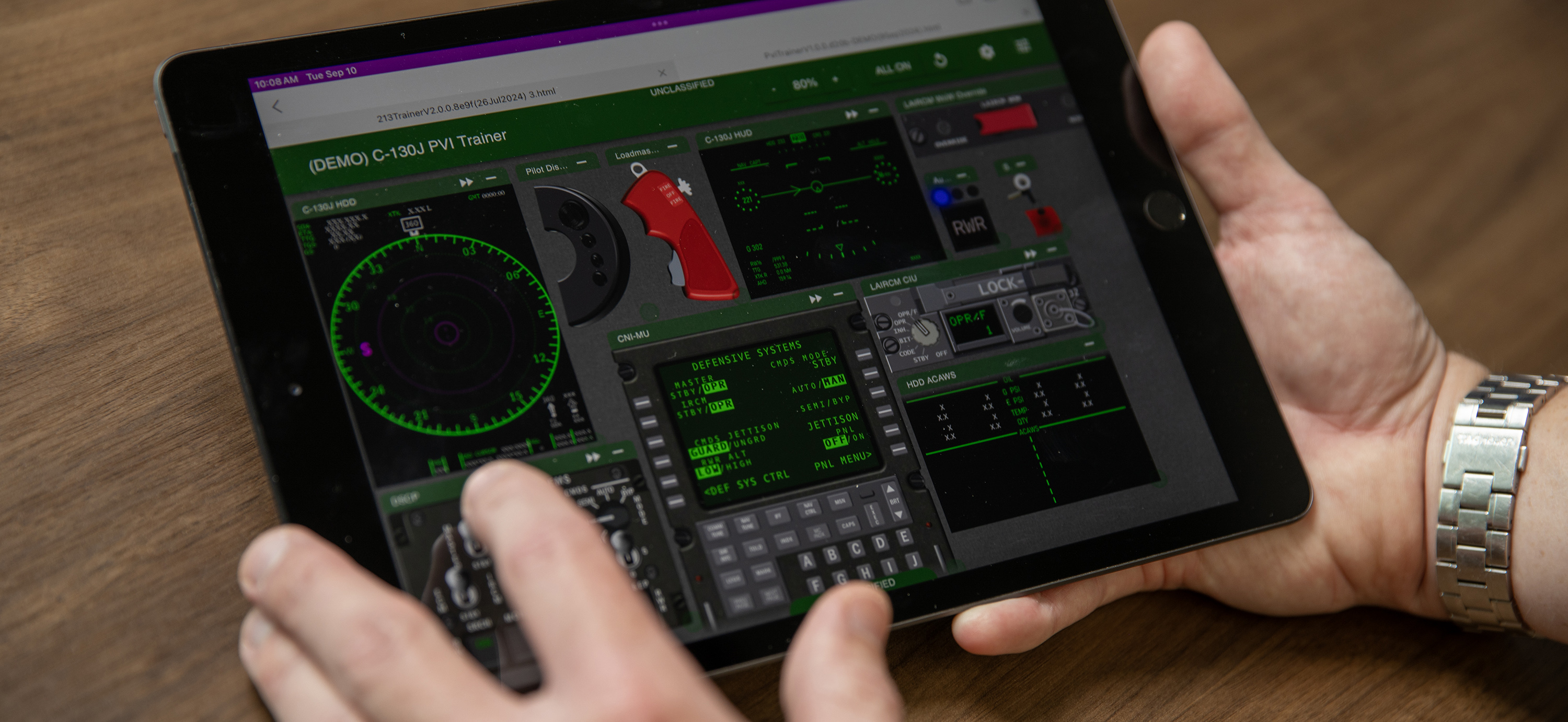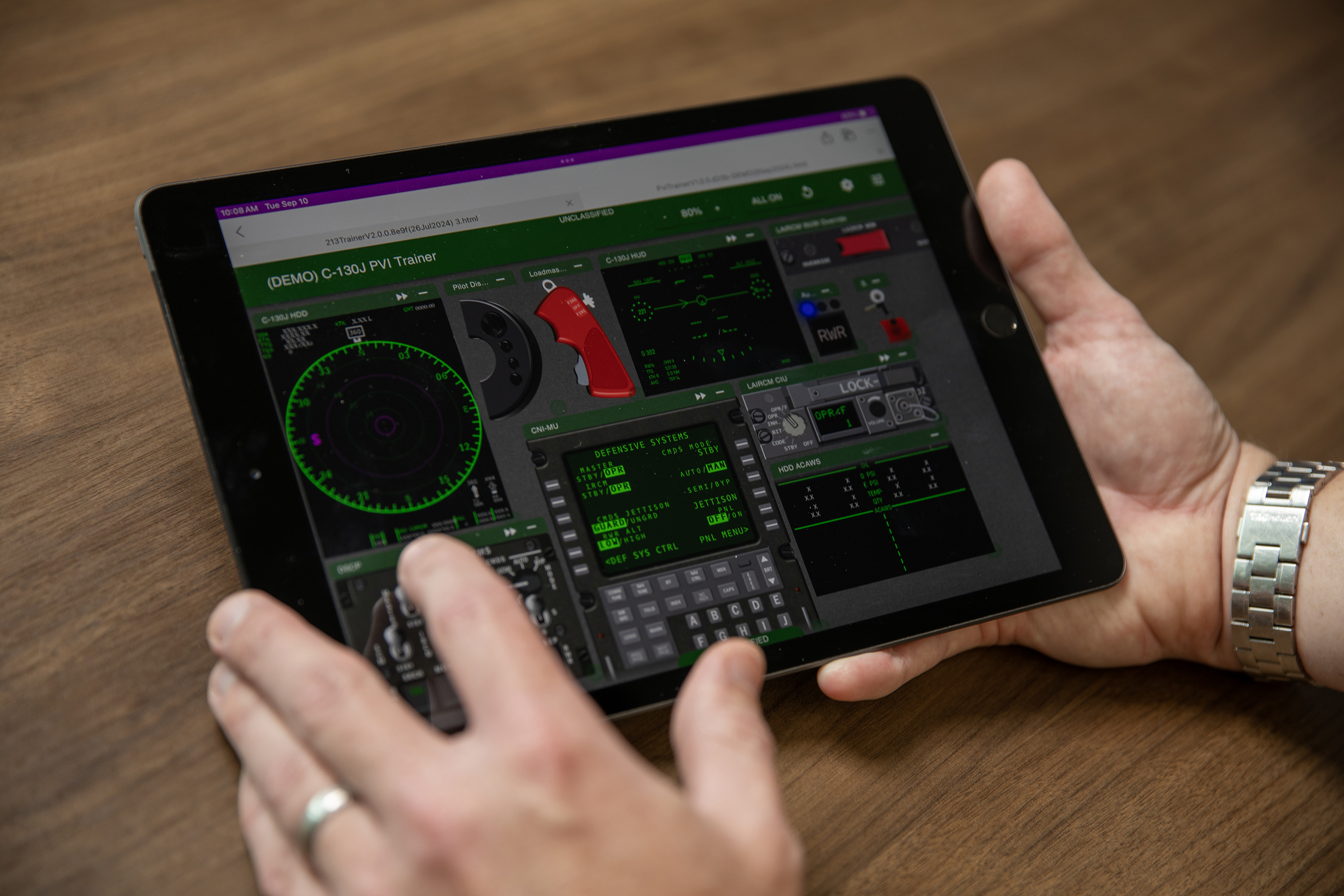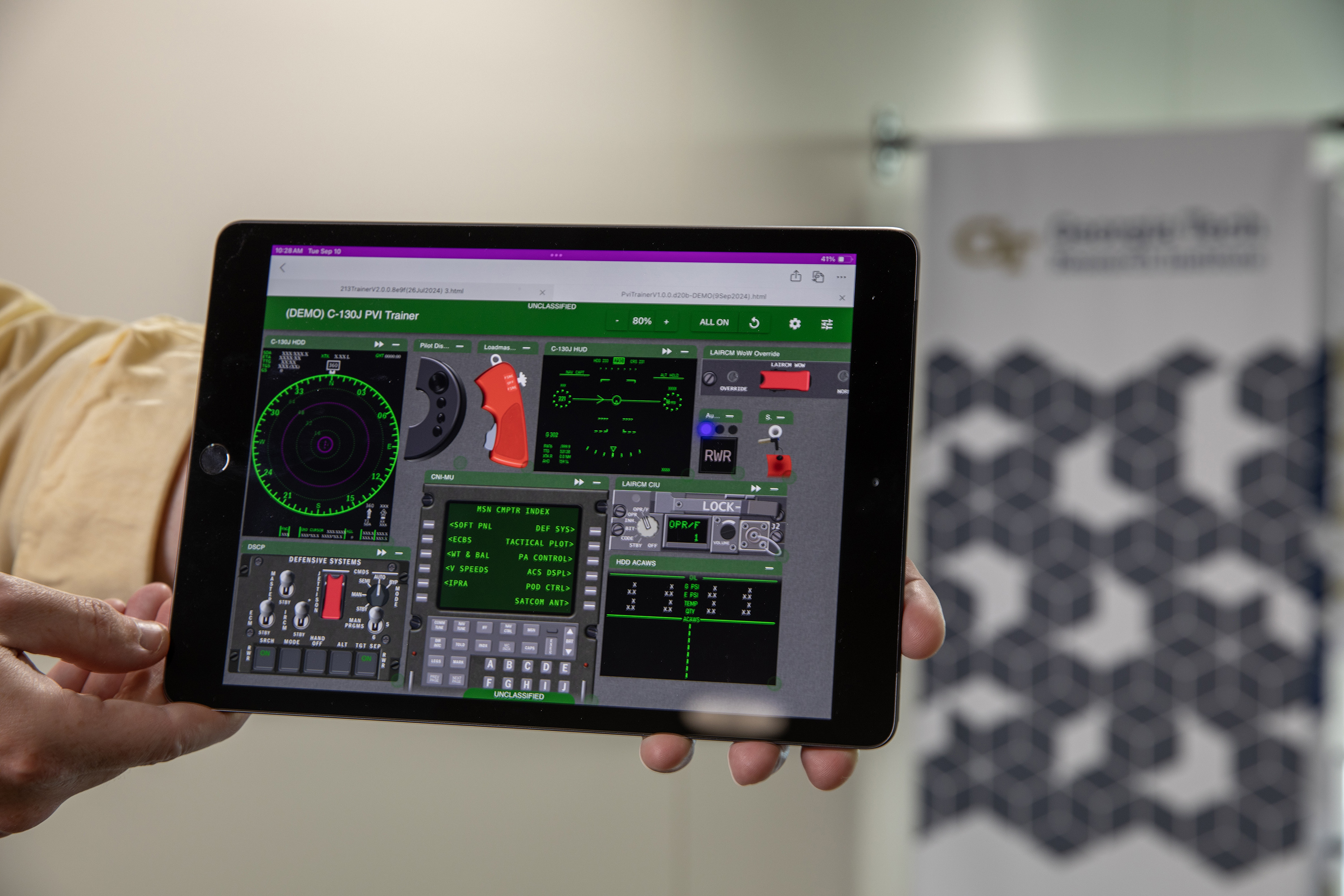
A new training system that can run on ordinary tablet computers is enhancing existing electronic warfare (EW) instruction for the crews of U.S. air mobility aircraft, including the C-130H, C-130J, and C-17 transports. Known as the Pilot Vehicle Interface (PVI) Trainer, the simulation system complements training missions in real aircraft, which can be expensive, and improves access to on-the-ground training.

EW system training is essential to maximizing the survivability of aircrew and aircraft operating in contested environments. Increasing the familiarity of mobility aircrews with these complex systems is a major focus of the Advanced Airlift Tactics Training Center (AATTC), which supports the development of EW systems training capabilities to complement in-classroom instruction, as well as the ability to be loaded onto desktop computers and tablet devices for use outside the classroom.
“There are training opportunities after in-classroom instruction that don’t require hands-on system training or training sorties to gain familiarity with the real equipment and its behaviors,” said Tom Glimmerveen, a senior research engineer at the Georgia Tech Research Institute (GTRI), which developed PVI Trainer for the AATTC. “Using this inexpensive, computer-based system allows aircrews to become more familiar with EW systems before they fly in a real trainer, and it allows them to continue practicing after the training.”

For example, setting up EW systems to dispense countermeasures requires selecting a specific sequence of switches and buttons. Learning that sequence can be done with the PVI Trainer, which accurately simulates the EW equipment and the responses aircrews will receive when they operate the real equipment. Having that knowledge ahead of time is one less thing aircrews have to learn when they enter the intensive training environment.
“This provides more hands-on time to interact with the simulated EW equipment, which can light up and display information in the appropriate ways, making the real equipment significantly more familiar to aircrews before they get hands-on time with the real systems,” Glimmerveen said. The realism even extends to the simulations of the audio signals that warn aircrews if they are being tracked by hostile radars.

The PVI Trainer application provides realistic menus, interfaces, and threat displays that can be stimulated with virtual infrared (IR) and radio frequency (RF) threats, clutter, system failures, and varying aircraft environmental conditions. There is also an RF threat library and a scenario-generation tool that instructors can populate and share with students.
Located in St. Joseph, Missouri, the AATTC serves the U.S. Air Force Air Mobility Command, U.S. Air Force Reserve, and Air National Guard, by training the crews on the C-130 and C-17 aircraft they would operate in combat. Because the PVI Trainer can be installed on portable devices, it can also provide more frequent refresher training at the unit level. On tablet devices, the system operates in standalone mode without the need to connect to other resources.
“Being able to run this anywhere is a new thing for this type of training application,” Glimmerveen said. “There’s no installation or dependency on system equipment before it can run. It’s super lightweight and runs on equipment aircrews may already carry with them.”
While simple installation and portability were priorities, that hasn’t compromised the system's accuracy, an important goal for simulating equipment that must be used correctly the first time in contested environments.
“We have a high bar for accuracy,” he said. “We need to make something that is truly faithful to the real equipment. Yet it is super-portable, using web technology, so as long as you have a modern browser, it can run on most any equipment that aircrews will be able to access. And we built it to be engaging because we want the crews to spend time on the system and interact with it.”
PVI Trainer is now in use in classrooms and other training venues, and Glimmerveen expects its use will continue to grow as instructors, aircrews, and others appreciate its value.
“It’s getting out there, and we are trying to enable it to be more widely disseminated,” he said. “This could provide a lot more training and more engaging training on simulated EW equipment that is specific to what the aircrews will really be using.”
PVI Trainer is available now for the C-130H and C-17 aircraft, and GTRI recently completed a new version that adds support for the C-130J, which uses an advanced integrated cockpit. Beyond those three aircraft, the researchers would like to evaluate potential applications in other platforms, such as the KC-46 and KC-135 aerial refueling tankers.
The project is among a series of portable training applications GTRI has developed. For example, a trainer for the AN/ALQ-213 system used on aircraft such as the F-16 was developed for the Air National Guard Air Force Reserve Command Test Center (AATC) in Tucson, Arizona.
Among the researchers contributing to portable EW system training programs are Scott Bowen, Bobby Oates, Rod Orr, Lamar Phillips, Andy Schoen, Rob Walling, and Michael Walter. Also supporting the program were team members from the ANGPD STJ Field site, AATTC subject matter experts who provided information about the aircraft and EW systems, and the Air Force Electronic Warfare & Avionics Division.
“It feels like we are doing something very important for the mobility community,” said Glimmerveen. “We think this can fill an important gap.”
Writer: John Toon (john.toon@gtri.gatech.edu)
GTRI Communications
Georgia Tech Research Institute
Atlanta, Georgia USA
The Georgia Tech Research Institute (GTRI) is the nonprofit, applied research division of the Georgia Institute of Technology (Georgia Tech). Founded in 1934 as the Engineering Experiment Station, GTRI has grown to more than 2,900 employees, supporting eight laboratories in over 20 locations around the country and performing more than $869 million of problem-solving research annually for government and industry. GTRI's renowned researchers combine science, engineering, economics, policy, and technical expertise to solve complex problems for the U.S. federal government, state, and industry.



